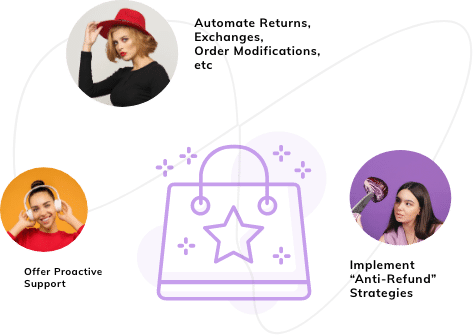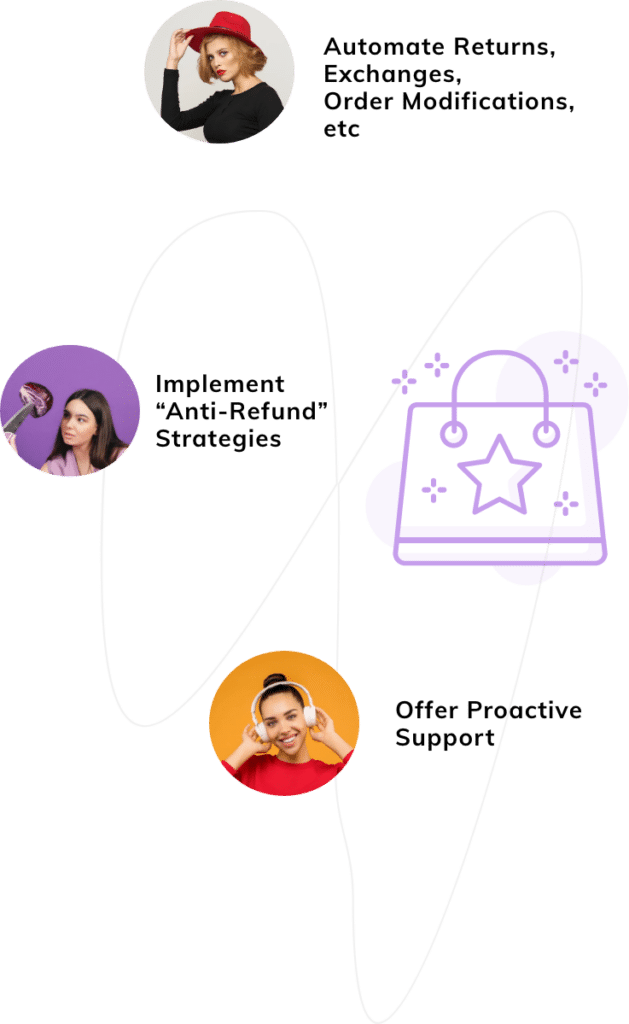Last Updated: April 2024
Admit it or not, consumer trust in branded content is decreasing. Research states that 77% of US consumers believe that trusting what companies say and do has become more difficult in recent years.
So how do you go about establishing trust with your customers?
Employee advocacy can be one of the most effective ways to build consumer trust in your brand. Let’s face it, who better to promote a brand’s culture and values to followers than its employees.
According to Edelman’s study, 63 percent of respondents people trust advocates more than what a brand says about itself.
So employee advocacy can be a great strategy to boost your brand marketing efforts. But how to leverage employee advocacy for your business? This guide will give you a comprehensive view of employee advocacy.
In this guide, we will talk about:
- What is Employee Advocacy?
- Benefits of Employee Advocacy
- Some Best Examples of Brand Advocacy
- Employee Advocacy Program
What is Employee Advocacy?
Employee advocacy is a business strategy that enables employees to contribute to a brand’s marketing efforts on social media and other networks. Simply put, employee advocacy is the promotion of a brand or company by its employees.
With the help of a good employee advocacy strategy, your employees can:
- Increase brand awareness by sharing branded content and promotions.
- Positively share their experiences and work life, providing an inside look.
- Serve as an expert by recommending the company’s products and services to friends and family.
Let’s understand the benefits of employee advocacy in detail:
Why is Employee Advocacy Important? (Benefits)
So, what happens when your employees become active brand advocates? Here are some major benefits of employee advocacy:
1. Increase in sales
Employee advocacy does not entail your employees making cold sales pitches to strangers on the internet. It’s all about genuine, open communication.
Since social media presents a personal platform for your sales team to connect and converse with an audience, leads developed through employee social marketing convert 7x more frequently than other leads.
Another benefit of employee advocacy for sales is that it helps build up personal brands for your employees. Sharing valuable content about their niche allows them to establish themselves as experts or thought leaders.
2. Expand brand’s reach
The impact of a repost from your employees on a social channel can be extremely powerful compared to a sponsored ad on your brand account.
Have a look at these stats:
- Your employees are connected to 10 times more people than your brand.
- Employee-shared brand messages reached 561 percent more people than messages shared via official brand social channels.
Tip: A good place to start is by looking for employees who have a sizable audience on various social media platforms and are willing to promote your brand through their personal networks.
3. Save resources on marketing
The hard truth – The amount of organic reach possible on social media has reduced substantially despite marketing teams spending more on ads to boost their reach.
On the other hand, employee advocacy could be a more cost-effective way to expand your reach and target new audiences. Brand messages are re-shared 24 times more frequently when posted by an employee as opposed to the brand’s social media channels.
4. Improve brand image
Employee-created content can authentically represent your company culture. Personalization of content on work culture, internal communication, and life inside the organization by employees creates an organic image around the brand.
When employees express their opinions and provide positive feedback about your brand and products on the internet, customers are encouraged to do the same. With employees endorsing your brand online, consumers’ overall perception of your brand can quickly improve.
5. Gain trust and credibility
It’s no secret that your employees are some of your brand’s most trusted advocates. Potential customers trust employees more than CEOs, journalists, and celebrities, according to this study.

Also, the fact that people are 3x more likely to read a post from a friend than from a brand itself should be reason enough to build a strong employee advocacy program.
Employees who advocate for a brand make the organization feel more human and this results in long-term trust.
Some Best Employee Advocacy Examples
Let’s take a look at how some major brands leverage employee advocacy to improve their communication, marketing, sales, and recruiting.
– Starbucks
At Starbucks, employee advocacy seems to be a top priority. How do they have huge numbers of employees promoting the brand on social media every day?
Starbucks’ brand advocacy strategy revolves around referring to employees as “partners”. By building a sense of community combined with incentives, employees started sharing authentic content about the brand/ products on social media.
This system not only boosts employee morale but also gives customers a unique look into Starbucks’ workplace culture.
The Result: The Starbucks partner accounts have acquired hundreds of thousands of followers across Facebook (378K followers), Twitter (48K followers), and Instagram (139K).
– IKEA
The main goal of IKEA’s employee advocacy program seems to be to improve the brand’s reputation and connect with new customers.
It appears IKEA quickly realized that its employees had more online influence with their audience than sponsored influencer posts. Their ability to share genuine brand experiences, as well as product knowledge, made them ideal brand advocates.
The IKEA Ambassador Club was formed as a result of this. The campaign enabled IKEA fans and employees to post content to generate interest in their brand in exchange for rewards.

The Result: IKEA’s campaign increased 11% in-store visits, 9,000 pieces of content, and over 63 million impressions.
– Trello
Trello does not follow a traditional employee advocacy program. Since the majority of Trello’s employees work remotely, a typical advocacy system is difficult to implement. But this doesn’t stop their employees from sharing fun posts on social channels about the brand.
Trello has hashtags such as #Trelloemployeetakeover or #Trellotogether that employees use when posting engaging content about the brand.
The Result: The Trello Instagram account has managed to grow by over 56,000 followers using authentic content.
So now you must be convinced to build an employee advocacy program for your brand. Great, but if you aren’t sure where to start, here are some important steps to follow:
How to Build an Employee Advocacy Program?
1. Set targets that can be accomplished
Setting specific goals and objectives that lead to measurable results can give your employees a clear idea of what the campaign objectives are.
Here are a few common goals for employee advocacy:
- Increased website traffic
- Lead generation
- Increased social reach
- Lower your marketing costs
Also be sure to create a framework for your program that allows for communication with your employees for updates, feedback, and so on.
2. Encourage your employees to take part in the program
“How do I benefit from sharing company content on social media?”
This is a question that many of your employees can have when you introduce the advocacy campaign.
Encouraging employees to take part in an advocacy campaign and keeping them engaged is a thing most brands struggle with, almost 50% of brands find it difficult to keep their employees engaged in their advocacy program.
Tip: One way to solve this is to gamify the entire experience. You need to make the campaign fun and rewarding to ensure employee engagement. Internal incentives can help with this. Rewards such as gift cards, bonuses, employee recognition can encourage employees to commit to the program.
3. Provide training to your employees
Contributing to an employee advocacy program is straightforward, but your employees will need some guidance at first.
How you go about training your employees will depend on the social media platform, what their roles are, and of course the campaign objectives. Here are some things the training should focus on:
- Explaining the campaigns’ goals
- Understanding the target audience
- Practical social media skills
- Setting clear content guidelines
4. Build a social media team
You need a team to represent and manage your advocacy program. This team will play an important role in setting the tone for the advocacy campaign encouraging long-term brand commitment.
Why is building a social media team a key step? Your brand’s social media team would provide clear documentation outlining goals, KPIs, posting protocols, tools and platforms used, and other key information. Make sure to listen to their feedback and incorporate it to improvise your strategy.
5. Set a launch time
Employee advocacy, like any other campaign, comes with time constraints.
We’ve all seen it: projects being pushed back simply because no specific launch date was chosen to begin with.
To give a successful kick start to your advocacy program, you should communicate the campaign’s timeline clearly and assign tasks to everyone involved to find the right balance for your team.
6. Manage and track the results
Measuring the results of an advocacy program is one of the crucial steps that you should not underrate. Why?
Because if you don’t measure the outcome, you won’t know if the campaign was a success or a failure. Furthermore, relevant data that is constantly collected can be used to get back on track on time or to improve your advocacy program in the future.
So, without any doubt, take the time to analyze the collected data and see how the campaign is performing. Some metrics to track your employee advocacy program can be:
- Engagement rate (likes, shares, comments)
- Revenue generated
- Website Traffic
- Followers gained on social media
Still confused? Let’s understand how to measure the results of your campaign in detail:
How to Measure Results of an Employee Advocacy Program?
Tracking your content analytics is crucial for evaluating and improving your advocacy program’s success. Here’s how to see if your employees have a direct impact on your marketing efforts:
– Engagement rate
In most cases, the primary goal of a content strategy is to increase engagement. Likes, comments, and shares indicate how well the content your employees share is received by your target audience. Also, be sure to keep track of how many people are sharing company content with their audiences.
If keeping up with your followers becomes difficult, data from tools like Instagram Insights, Twitter Analytics, and Facebook Insights will show how engaged your audience is.
Use these insights gained from your engagement on social media to plan future marketing strategies and improve your advocacy program.
– Revenue generated
Employee advocacy has evolved into an effective tool not only for engagement but also for sales. But social selling can often be difficult to measure. Here are some metrics to help you estimate how much new business your advocacy program has generated:
- Click-through rate
- Number of leads generated
- Lead conversion rate
- Amount of demand generated
- Average order value, etc.
– Audience growth
This is a metric that is linked to the rate of customer engagement. It’s a good idea to keep track of all the new followers or connections you make.
The Audience growth rate measures the change in a brand’s or company’s social media following across various networks. The audience growth from your employee advocacy program can be determined by tracking this growth rate on each individual network.
Here’s how to measure audience growth:
- Measure the number of new followers you’ve gained on each platform since the start of the advocacy campaign.
- To calculate your audience growth rate percentage, divide the number of new followers by your total audience on each platform and multiply by 100.
- Make sure to identify which networks and content types are generating the most growth.
This is usually a good indication of how much brand awareness and reach has grown.
– Increase in traffic
Whether you want to engage existing customers or reach a new audience, the end goal of most advocacy programs is to increase traffic. Even if you have great interaction rates and a large audience, none of that matters if no one visits your website.
According to Inc., an employee advocacy program can result in a 5x increase in web traffic and a 25% increase in leads.
You can measure the entire website traffic sourced from employee shared content using an analytics tool like Google Analytics.
– Rate of conversion
Simply put, your conversion rate is the percentage of visitors who convert as a result of an employee’s post on the brand’s website or landing pages. These conversions can include:
- Submitting a form
- Making a purchase
- Event registrations
- Subscriptions
- Downloads
- Requesting a consultation, etc.
A high conversion rate indicates that your content is engaging and your advocacy strategy is effective.
Employee Advocacy Best Practices
Here are some tips to help you get the most out of employee advocacy in your company:
– Encourage and appreciate
A great way to get people interested in an employee advocacy program is to encourage employees. Involving members of your senior leadership can encourage more employees to participate. Make it a point to show that the company appreciates the effort they’re putting in by rewarding and incentivizing them.
Pro tip: Create a leaderboard of employees who put in the most effort during the program. This encourages healthy competition among colleagues and amplifies the process.
“Not all of your employees are going to stay invested in the program. But, if you foster an environment where they constantly feel involved and recognized for their effort, the chances of them staying engaged will be much higher!” – Clémence Lafond, Digital Communications Officer @Atos (Source- Oktopost)
– Utilize technology and other resources
To truly scale an employee advocacy program, you need a flexible tool to create, share, and post content easily. Employee advocacy platforms streamline the entire process along with allowing you to track the performance of the program.
These platforms allow you to track important metrics such as reach, engagement, and conversions. Use these tools to gain a clear picture of the program’s overall success and optimize it for even better results.
We’ve compiled a list of the best advocacy platforms to help you in identifying which tool is best for your organization; keep reading to learn more.
– Be flexible and give freedom to your employees
Planning your campaign and training employees to advocate the brand is a good practice but, you should also give your employees the freedom to show their creativity.
Employees should be brand advocates because they want to be, not because they have to. Genuine employee advocacy is not forced.
Along with flexibility, provide your employees with the required social media training and tools, and allow them to freely share authentic content when and how they want. Your employees understand how to communicate with their target audience, so encourage them to add their own voice and insights to the content they share.
Top 5 Employee Advocacy Tools
To manage and track employee advocacy programs with ease, you can use employee advocacy tools/platforms. Employee advocacy programs focus on managing your campaign, communication between teams, curating content, etc.
Here are some of the best employee advocacy platforms and tools:
1. Bambu(Sprout Social)
Bambu is an employee advocacy tool by Sprout Social.

Bambu allows your employees to share pre-approved curated content on their social channels. The platform contains a sharing board which makes it easy to share suggestions, edit captions, and other details before setting up posts for publishing. The platform also offers other premium tools such as virtual event marketing and tradeshow event marketing.
2. LinkedIn Elevate (now Linkedin My company)
If your company and employees are highly active on Linkedin, this tool is for you.

Without having to send endless emails, this tool allows you to share content trending on LinkedIn with all of our employees. It’s a user-friendly and powerful tool that allows for precise statistics for future comparisons and goal setting. The platform also provides a scheduling tool, feed updates, custom content suggestions, etc.
3. Smarp
Smarp is a one-stop-shop for all of your advocacy and communications needs.

Smarp allows your employees to publish value-added posts to their social networks with an easy-to-use schedule tool. Marketers can easily provide employees with an overview of company news, events, and blogs using Smarp. It also allows employees to set KPIs for themselves, and track metrics such as the number of visits, likes, and reshares of posted content.
4. Sociabble

With Sociabble, you can integrate your social media handles, post content on social media, schedule posts, run challenges, and advocacy campaigns, and draw insights. It is straightforward to use and also allows administrators and employees to create personalized content. Sociabble also provides tools such as custom push notifications, an organized content library, and retargeting tools like RadiumOne.
5. Oktopost
It can get exhausting trying to go on social media every day and find things to post for a campaign. Oktopost solves this issue.

Oktopost is a social media management tool that allows scheduling, social listening, engagement tools, and content curation. The platform dashboard makes it set up different campaigns and easily check which campaign a post is relevant to. Employees can also easily schedule posts via the calendar content scheduler.
Conclusion
So now you must be convinced that employee advocacy programs can benefit your brand in a number of different ways. If not, I don’t know what can.
An employee advocacy program if built carefully can increase your brand awareness and credibility along with building trust with your target audience. Moreover, content created by your employees can authentically represent your brand as well, promoting your brand values and beliefs.
We hope this post helped you gain some insight on employee advocacy and you will incorporate it into your business’s marketing.









